Watermelon Pests and Diseases: [Detection, Causes and Solutions]
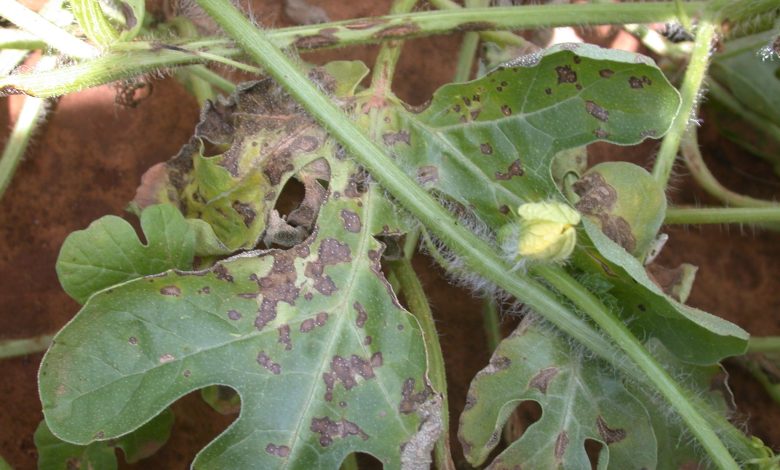
 For hot summer days there is nothing better than eating a refreshing piece of watermelon.
For hot summer days there is nothing better than eating a refreshing piece of watermelon.
This fruit with a sweet and juicy center is easily cultivated , but is prone to damage from certain pests and diseases.
If you want to enjoy a healthy and abundant harvest, do not stop reading this article. With this information you will have the opportunity to act in time.
watermelon diseases
Mildew
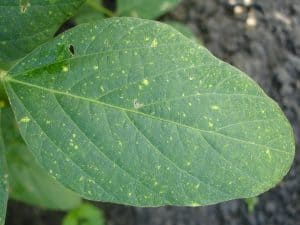 It is a disease caused by fungi and that manifests itself in many types of plantations.
It is a disease caused by fungi and that manifests itself in many types of plantations.
Its symptomatology is evidenced by spots on the front part of the leaves that are first seen in a light green tone and then turn yellow.
If we notice the underside, there will also be spots but grayish in color that correspond to the presence of the mycelium of the fungus.Both effects cause dryness in the leaves, causing them to not be able to carry out their processes correctly, which leads to their death.
The good news is that you can work with milk-based fungicides or nettle slurry.
Gummy stem canker
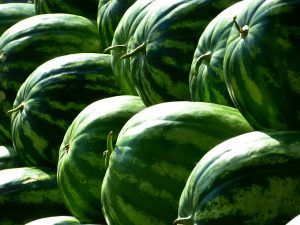 It is a disease that is caused by the presence of a fungus, which accesses the interior of the plant through a wound.
It is a disease that is caused by the presence of a fungus, which accesses the interior of the plant through a wound.
It is possible that it attacks plants in the process of development or adult versions.In the first case, round spots are detected on the leaves that have brown and black dots.
In adult plants, the action is worked on the stem where stains associated with the mycelium of the fungus are generated.In turn, gummy formations are noted in the areas close to the plant injury.
Finally, it causes the leaves and other parts of the plant to gradually wither until it ends up dying.Control, correct pruning planning and the use of disinfected tools will be a good way to prevent this disease from occurring.
In any case, the treatment with fungicides will include extracts of horsetail or nettle slurry.
Alternaria leaf blight Alternaria cucumerina
- Symptoms: Small yellow-brown spots with a yellow or green halo that appear first on older leaves. As the disease progresses, the lesions expand and become large necrotic patches, often in a concentric pattern. The lesions coalesce, the leaves begin to curl, and eventually die.
- Cause: Fungus. The disease is common in growing areas where temperatures are high and rainfall is frequent.
- Control: Cucurbits should be rotated with another crop every 2 years to reduce inoculum levels.
Crop debris should be removed from the field as soon as possible after harvest or plowed deep into the soil.
Appropriate protective fungicide applications can help slow disease development; water plants from the bottom rather than from the top to reduce periods of leaf wetness that favor disease development and spread.
Anthracnose Colletotrichum orbiculare
- Symptoms: Angular dark brown or black lesions on leaves with a yellow border; elongated lesions with sunken centers on stems and fruit
- Cause: Fungus. It is spread by wind and rain.
- Management and control: Rotate crops with non-cucurbits every 1-2 years to avoid accumulation of diseases; plant onlydisease-free and treated seeds.
botrytis
Botrytis is also known in the agricultural world as gray rot because it is exactly what they produce.
The primary action is on the fruits that are affected and can be completely lost.
However, the flowers that remain on the plant also suffer from necrosis that prevents them from working in the subsequent fruiting process.Botrytis can be treated with natural products such as nettle slurry or sulfur.
Cercospora leaf spot Cercospora citrullina
- Symptoms: Initial disease symptoms appear on older leaves as small spots with light brown to tan centers. As the disease progresses, the lesions enlarge to cover large areas of the leaf surface; lesions may have a dark border and be surrounded by a chlorotic area. The centers of the lesions can become brittle and crack.
- Cause: Fungus. The fungus survives on plant debris; spread by wind and splashing water; occurs primarily in tropical and subtropical growing regions
- Management and control: All diseased plants must be removed and destroyed to prevent further spread; crop debris should be removed after harvest or plowed deep into the soil to reduce inoculum.
Fusarium wilt Fusarium oxysporum
- Symptoms: Wilted plants; wilting is limited to one or more vines; foliage is dull gray-green in appearance, turning yellow as disease progresses; vascular tissue has a red discoloration.
- Cause: Fungus. The disease can be spread through infected seeds or through contaminated water and/or equipment.
- Management and control: Plant in soils with good drainage and avoid waterlogging; plant seeds treated with fungicides; rotate crops in a4-year rotation.
Gummy stem blight; Didymella bryoniae
- Symptoms: Round or irregular brown lesions with faint concentric rings on the cotyledons. Brown or white lesions on crown and stems; smooth, circular brown lesions on fruit; lesions on stems and fruit may ooze a sticky amber substance.
- Cause: Fungus. The fungus can be spread by infected seeds, air currents, or splashing water; survives on plant debris in soil; disease onset is favored by warm, humid conditions
- Management and control: Use disease-free seeds; treat the seeds before planting; rotate crops every 2-3 years to a non-cucurbit crop to reduce disease build-up in the soil.
Reduce crop residues in the soil by plowing up plant debris after harvest; The application of preventative fungicides is usually required to successfully control the disease.
powdery mildew; Podosphaera xanthii
- Symptoms: Reddish or tan appearance of older leaves; Obvious spots of white powdery growth on the leaves.
- Cause: Fungi. The appearance of the disease is favored by dry weather and high relative humidity.
- Management and control: Plant in places with good air circulation and sun exposure; do not overcrowd the plants; disinfect garden tools regularly.
Verticillium wilt Verticillium dahliae
- Symptoms: Symptoms usually appear after the fruits of the watermelon appear; chlorotic leaves developing necrotic areas, leaves drooping, symptoms on one side of the vine only, discoloration of vascular tissue in roots.
- Cause: Fungus. The fungus can survive in the soil for many years; the onset of the disease is favored by cool or mild spring weather
- Management and control: Do not plant in areas where other susceptible crops have been previously grown; delay planting until temperatures are warmer.
nematodes
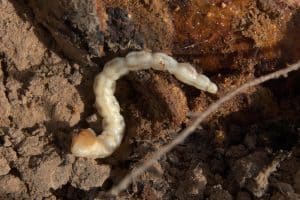 Nematodes appear as a kind of cysts that are grouped in the roots of the watermelon plant.
Nematodes appear as a kind of cysts that are grouped in the roots of the watermelon plant.
These formations cause the roots not to perform their functions correctly and, therefore, the plant does not grow or does so with malformations.
In plants with advanced development, it will cause wilting that will end the life of the plant if it is not attacked in time.As a preventive strategy, it is recommended to keep watermelon plantations free of weeds, in addition to using healthy and resistant seeds.
In the case of treatment, when the disease already exists, it will consist of working with a process known as solarization.The idea is to distribute a quantity of plastic material on the planting land so that the action of the sun increases its temperature.
In this way, it will be possible to kill the pests that are in the most superficial part of the planting.
Angular leaf spot Pseudomonas syringae
- Symptoms: Small water-soaked lesions on leaves that expand between leaf veins and become angular in shape; in moist conditions, the lesions secrete a milky substance that dries to form a white crust on or next to the lesions. As the disease progresses, the lesions turn tan in color and may have yellow/green borders. Centers of lesions dry out and may fall off leaving a hole in the leaf
- Cause: Bacteria. It spreads through infected seeds, rain splash, insects, and movement of people between plants; the bacterium overwinters in crop debris and can survive for 2.5 years
- Management and control: Use disease-free seeds. Do not grow plants in fields where cucurbits have been grown in the previous 2 years.
Protective copper spray can help reduce disease incidence in hot, humid climates, plant resistant varieties.
Bacterial fruit spot Acidovorax avenae
- Symptoms: Small water-soaked lesions on top or sides of fruit that enlarge on surface; lesions on watermelon may turn reddish or brown and crack.
- Cause: Bacteria. Spread through infected seeds or splashing water; the appearance of the disease favors moist conditions.
- Management: Use pathogen-free seeds and transplants; rotate crops; Avoid using irrigation above the leaves and flowers.
Neck soft rot
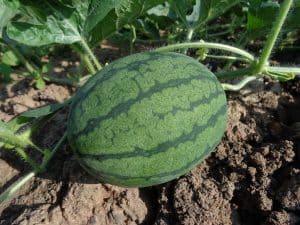 The fungus that produces this disease causes whitish cotton-like spots to form on the neck of the plant.
The fungus that produces this disease causes whitish cotton-like spots to form on the neck of the plant.
Another important detail is that it generates a wet appearance and where blackheads can also be seen, as if it had been sprinkled with ground pepper.
Being in an advanced stage, the plant begins to wither progressively due to the blockage of sap transfer to the entire structure.You must take into account that the fungus enters the plant through wounds.
This calls our attention to ensure that the pruning process is carried out with well disinfected tools and at the correct time to ensure healing.The fungicide made with horsetail extract may be one of the best alternatives when it comes to combating its effects.
When the fungicide is not enough, the most appropriate thing is to burn the affected plant, so that the fungus is not transferred to other nearby ones.Having this information ready will help us prevent and act much faster in case any damage wants to affect our valuable plantation.
Aster yellows Aster yellows phytoplasma
- Symptoms: Foliage turns yellow; secondary shoots begin to grow prolifically; stems take on a stiff, upright growth habit; leaves are often small in size and distorted, may appear thickened; flowers are often disfigured and have conspicuous leafy bracts; the fruits are small and pale in color
- Cause: Phytoplasma. The disease is transmitted by grasshoppers and can cause great losses in cucurbit crops.
- Management and control: Remove infected plants from the field to reduce spread; control weeds in the field and its surroundings that can act as a reservoir of phytoplasma; protect plants from leafhopper vectors with row covers
flower rot
- Symptoms: Symptoms first appear on immature fruit as small light brown spots near the flower end of the fruit; as the fruit grows, the spots enlarge, leading to dark, leathery sunken lesions on the fruit
- Cause: Nutritional disorder. Watermelon varieties that produce long fruit are more susceptible to blossom end rot.
Management and control: Blossom rot is caused by lack of calciumin the developing fruit and occurs when the absorption of nutrients by the plant is interrupted; Among the factors that interrupt the absorption of nutrients are drought, root damage or high soil salinity; the application of an excess of nitrogenous fertilizers can also contribute to the development of blossom rot, since it promotes the vigorous growth of vegetative tissues and the depletion of calcium in the soil; watering the plants evenly and regularly reduces the incidence of blossom rot.
watermelon pests
thrips
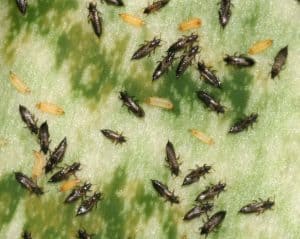 Thrips are very common pests in fruit crops and watermelon is no exception to this.
Thrips are very common pests in fruit crops and watermelon is no exception to this.
Its action occurs on the underside of the leaves where the lesions cause small silver-colored spots . These do not have a specific shape.
Paraffin oil is a good ally to combat them, as well as the mixture of sulfur and cypermethrin.
caterpillars on watermelon
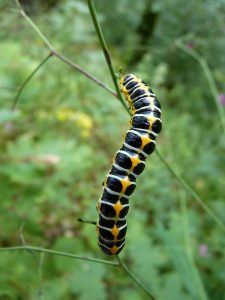 The caterpillars have the property of feeding on all parts of the plant, including the fruits, which they cause holes to enter the pulp.
The caterpillars have the property of feeding on all parts of the plant, including the fruits, which they cause holes to enter the pulp.
As they are sometimes difficult to see with the naked eye, the easiest strategy is to check the debris they leave behind.
They are often mistaken for snails, but the latter leave slime in their wake, while the caterpillars only produce excrement .One way to treat some types is by adding Bacillus Thuringiensis to cultures.
White fly
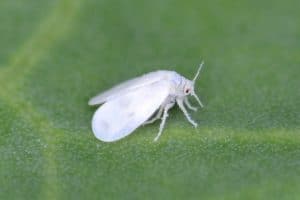 The whitefly is located on the back of the leaves , as in the case of many other pests.
The whitefly is located on the back of the leaves , as in the case of many other pests.
It sucks the sap , at the same time causing the formation of a molasses that can become a gateway for the development of diseases.
Its detection is quite simple because just by moving the leaves they will fly away, in a disorderly way.The biggest problem is that they are quite difficult to eradicate with known natural methods because they walk and also fly.
So the best option is to practice prevention with neem oil or, alternatively, use color traps when the attack is noticed.
Trichoplusia cabbage cooperative
Symptoms: Large or small holes in the leaves; the damage is usually extensive.
The caterpillars are pale green with a white line running down each side of their body; caterpillars are easily distinguished by the way they arch their bodies when moving; eggs are laid singly, usually on the lower leaf surface near the leaf margin, and are white or pale green
Cause: Insect. The insects spend the winter as pupae in the remains of the crop in the soil; the adult insect is a dark colored moth; caterpillars have a wide host range.
Management and control: Natural enemies often keep caterpillar populations at bay; if they become a problem, the larvae can be hand-picked from the plants.
An organically acceptable control method is the application of Bacillus thuringiensis, which effectively kills the youngest larvae.
Chemical sprays can harm populations of natural enemies and must be selected carefully.
Cutworms Agrotis spp
Symptoms: The stems of young transplants or seedlings may be cut at the soil line.
If the infection occurs later, irregular holes are produced on the surface of the fruits; the damaging larvae are usually active at night and hide during the day in the soil, at the base of plants, or in the remains of downed plants.
The larvae measure between 2.5 and 5 cm in length; larvae can display a variety of patterns and coloration, but typically curl into a C-shape when disturbed.
Cause: Insects. Cutworms have a wide host range and attack vegetables including asparagus, beans, cabbage and other cruciferous vegetables, carrots, celery, corn, lettuce, peas, peppers, potatoes and tomatoes.
Management and control: Remove all plant residues from the soil after harvest or at least two weeks before planting, this is especially important if the previous crop was another host such as alfalfa, beans or a legume cover crop.
Plastic or foil collars placed around plant stems to cover the bottom 4 inches above the soil line and extending a couple of inches into the soil can prevent larvae from nicking plants.
Collect the larvae by hand in the evening.
Spread diatomaceous earth around the base of plants (this creates a sharp barrier that will cut bugs if they try to crawl across it); apply suitable insecticides to infested areas of the garden or orchard if it is not grown organically.
Flea beetles Epitrix spp.
Symptoms
Small holes or pits in the leaves that give the foliage a characteristic «bullet hole» appearance. Young plants and seedlings are especially susceptible; plant growth may be reduced.
If the damage is severe, the plant may die. The pest responsible for the damage is a small (1.5-3.0 mm) dark colored beetle that jumps when disturbed; the beetles usually have a shiny appearance.
Cause: Insects.
Younger plants are more susceptible to flea beetle damage than older ones; older plants can tolerate infestation; flea beetles may overwinter on nearby weed species, on plant debris, or in the soil.
Insects can go through two or three generations in a year.
handling and management
In areas where flea beetles are a problem, floating row covers may need to be used prior to beetle emergence to provide a physical barrier to protect young plants.
Plant seeds early to allow for establishment before beetles become a problem; mature plants are less susceptible to damage.
Trap cultures can provide a measure of control; cruciferous plants are the best.
Applying a thick layer of mulch can help prevent beetles from reaching the surface. The application of diamotecoeus earth or oils such as neem oil are effective control methods for organic gardeners.
Application of insecticides containing carbaryl, spinosad, bifenthrin, and permethrin may provide adequate beetle control for up to a week, but will require reapplication.

![Photo of Inflorescence: [Concept, Characteristics and Types]](https://www.complete-gardening.com/wp-content/uploads/2022/08/inflorescence-concept-characteristics-and-types-390x220.png)
![Photo of Sowing African Violet: [Needs, Substrate, Irrigation and Cultivation]](https://www.complete-gardening.com/wp-content/uploads/2022/08/sowing-african-violet-needs-substrate-irrigation-and-cultivation-390x220.jpg)
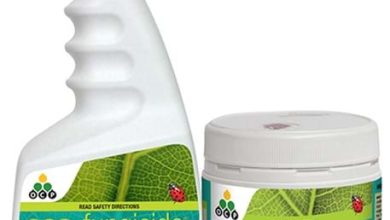
![Photo of Callistemon Citrinus: [Characteristics, Cultivation, Care, Pests and Diseases]](https://www.complete-gardening.com/wp-content/uploads/2022/08/callistemon-citrinus-characteristics-cultivation-care-pests-and-diseases-390x220.png)